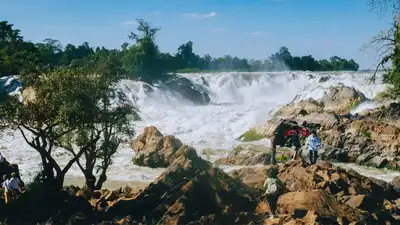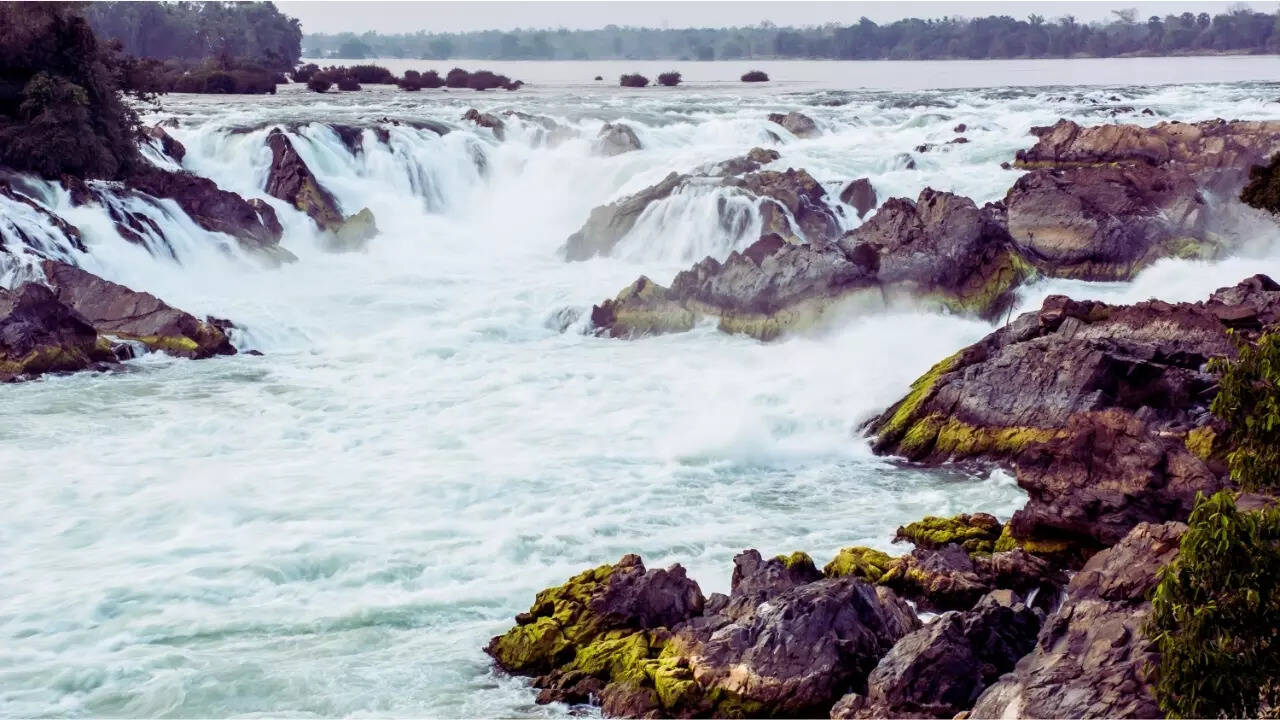ARTICLE AD BOX

Nestled in the southern reaches of Laos, along the mighty Mekong River, Khone Phapheng Falls stands as a testament to nature's raw power and scale. Often referred to simply as Khone Falls or Phapheng Falls, this cascading wonder is recognized as the widest waterfall on the planet.
While it may not boast the dramatic height of icons like Niagara or Victoria Falls, its immense breadth and relentless flow make it a unique spectacle in Southeast Asia. Khone Phapheng Falls is located in Champasak Province near the Cambodian border, and is a part of the larger Si Phan Don (Four Thousand Islands) archipelago, where the Mekong splits into a labyrinth of channels and islets.

Khone Phapheng Falls spans an astonishing average width of 10,783 meters (approximately 35,376 feet or 6.7 miles), earning its title as the widest waterfall in the world.
Khone Phapheng Falls comprises a series of rapids, cascades, and cataracts stretching over 9.7 to 10 kilometers along the river's length. The main drop reaches about 14 to 21 meters in height. What truly sets it apart is its volume: the falls discharge an average of 11,000 cubic meters of water per second, surging up to 50,000 cubic meters during peak flow, nearly double that of Niagara Falls.
The waterfalls’ thunderous roar can be heard from afar.
Locally, the falls hold cultural significance for the Lao people, who have long revered the Mekong as a life-giving force. The name "Khone Phapheng" derives from Lao words meaning "the falls that roar like a lion.”What’s in it for tourists?

The site is well-maintained with viewing platforms, walkways, and informational signs, allowing visitors to safely admire the falls from multiple vantage points. Entry fees are modest, typically around 50,000 Lao Kip (about INR 203), which includes access to a small museum and electric shuttle service for those with mobility needs.To reach the falls, most visitors base themselves in Pakse (the provincial capital) or the nearby islands of Don Det or Don Khon, accessible by bus or boat from major hubs like Vientiane or Siem Reap in Cambodia. Day trips often combine the falls with nearby attractions, such as Li Phi Falls (also known as Somphamit Falls) or dolphin-watching tours on the Mekong. For a more immersive experience, boat rides offer close-up views of the rapids.
Swimming is STRICTLY prohibited due to the strong currents.The best time to visit is during the dry season when water levels are lower, reducing the risk of flooding and improving visibility. Accommodations range from budget guesthouses on the islands to eco-lodges in Pakse.



.png)
.png)
.png)
















 3 days ago
6
3 days ago
6







 English (US) ·
English (US) ·